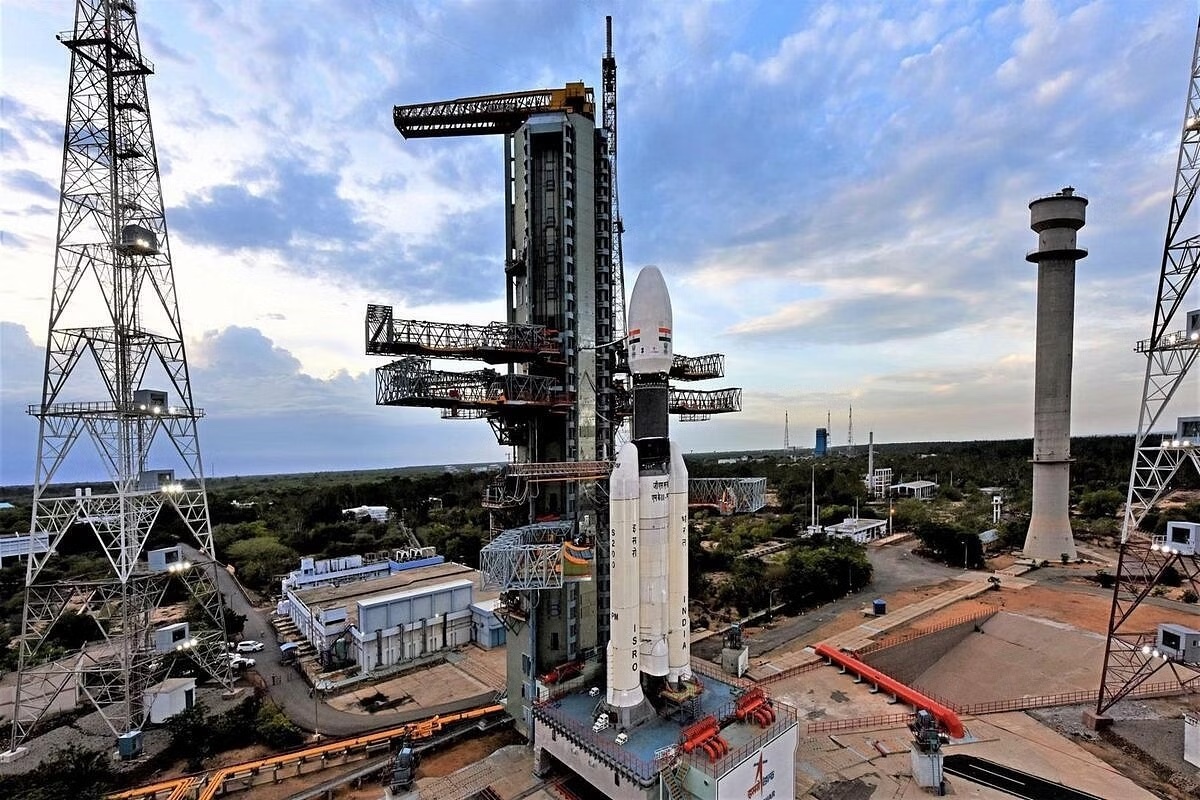22.11.2023
Chandrayaan-4 Mission: ISRO's Next Phase In Space Exploration Aims To Retrieve Lunar Samples

Mission's key objective is to collect samples from the lunar surface. (Representative Image)
After the success of the Chandrayaan-3 mission, the Indian Space Research Organisation (ISRO) is gearing up for a remarkable leap in space exploration with the upcoming Chandrayaan-4 mission.
What sets Chandrayaan-4 apart is its groundbreaking goal of bringing lunar samples back to Earth, a milestone that would mark a significant achievement in India's space endeavours.
Nilesh Desai, Director of the Space Applications Centre (SAC/ISRO), shared insights into the Chandrayaan-4 mission during a recent address to the Indian Tropical Meteorology Institute.
As reported by The Economic Times, the mission's key objective is to collect samples from the lunar surface, a task that involves intricate manoeuvres and advanced space technology.
The spacecraft will embark on a journey to the moon, where it will land, collect samples, and then connect to another module in space.
The second module will return to Earth orbit, with both modules eventually separating as they approach Earth.
One part will return to Earth, while the other continues to orbit the planet.
To execute the mission successfully, Desai outlined the need for two launch vehicles containing four modules: transfer module (TM), lander module (LM), ascender module, and re-entry module (RM).
The RM and TM would be parked in lunar orbit, while two descend, allowing the ascender module to separate from the lander module and collect the lunar sample.
However, the success of Chandrayaan-4 hinges on its ability to bring lunar samples back to Earth, a task requiring two powerful rockets for the cargo carrying the samples.
The feasibility of the mission is yet to be confirmed by ISRO.
Quelle: Swarajya
----
Update: 16.12.2023
.
ISRO to launch Chandrayaan-4 to bring back samples from Moon in 4 yrs: Somanath
Agency chief says Bharatiya Antariksh Station, a space station which will be capable of conducting experiments with help of robots, will be launched by 2028.
The Indian Space Research Organisation (ISRO) has planned to launch Chandrayaan-4 to bring back samples from the Moon in four years, said its chairperson S Somanath while elaborating on the space agency’s Vision 2047.
The first module of the Bharatiya Antariksh Station — India’s planned space station — that will be capable of conducting experiments with the help of robots will be launched by 2028.
Prime Minister Narendra Modi had previously called on the space agency to set up a space station by 2035 and send a man to the Moon by 2040.
While these missions may seem far off, an experiment crucial for sustained human spaceflight will be “launched in the next three to four months,” said Somanath during a lecture at Rashtrapati Bhavan Thursday.
The SPADEX experiment will demonstrate autonomous docking capability. Docking is a process where two spacecrafts are aligned in a precise orbit and joined together.
Explaining the mission, Somanath said: “Two satellites that are connected to each other will be launched, they will separate out, travel for a few kilometres, and then come back and connect.”
While India successfully developed the lander and rover on-board Chandrayaan-2 and Chandrayaan-3 missions after Russia backed out, Somanath said that for a sample-return mission “we need much more technology than what we have developed for the landing.”
He said work was on to develop technologies such as robotic arm to collect samples, mechanisms for docking in the Moon orbit and Earth orbit, transfer of samples, re-entry into the atmosphere without burning up — this will also be demonstrated by the Gaganyaan mission that will send astronauts to low Earth orbit and bring them back to Earth.
And while the ISRO recently demonstrated a trajectory to bring back a spacecraft from the Moon to Earth orbit using left-over fuel in the propulsion module, for a sample return mission the ascender module will have to collect the samples, come back to an orbit around the moon, and dock with another craft and transfer the sample, before it starts its journey back to Earth.
In Earth orbit, the spacecraft will have to dock with another module that will bring it to Earth. Just as with the Gaganyaan mission, the spacecraft with Moon samples will splashdown with the help of parachutes in the sea.
Somanath said that for sustained presence of Indians in space, ISRO is also working on developing an inflatable habitat module where the astronauts will be able to walk around and conduct experiments.
ISRO is also working on technologies such as satellites that will be able to re-fuel other satellites in space and ISRO Servicer Module that will be able to use robotic arms for maintenance of the modules and even replace modules when needed.
While the first module in 2028 can be launched with the existing rockets, he said, for building the entire space station a heavier launch vehicle will be needed. Somanath said ISRO was working on designing the Next Generation Launch Vehicle (NGVL) that will have a capacity to carry 16 to 25 T to low Earth orbit.
More importantly, ISRO is in discussion with NASA and the European Space Agency to build a common interface between the Indian space station and that of these countries. This interface will make joint work possible, said Somanath, indicating the possibility of collaborating with these countries for the space station. The current International Space Station has been built in collaboration with several countries and is likely to be de-orbited in 2030. The common interface will also allow the Indian module to go and dock with the ISS, he said.
Quelle: The Indian EXPRESS

